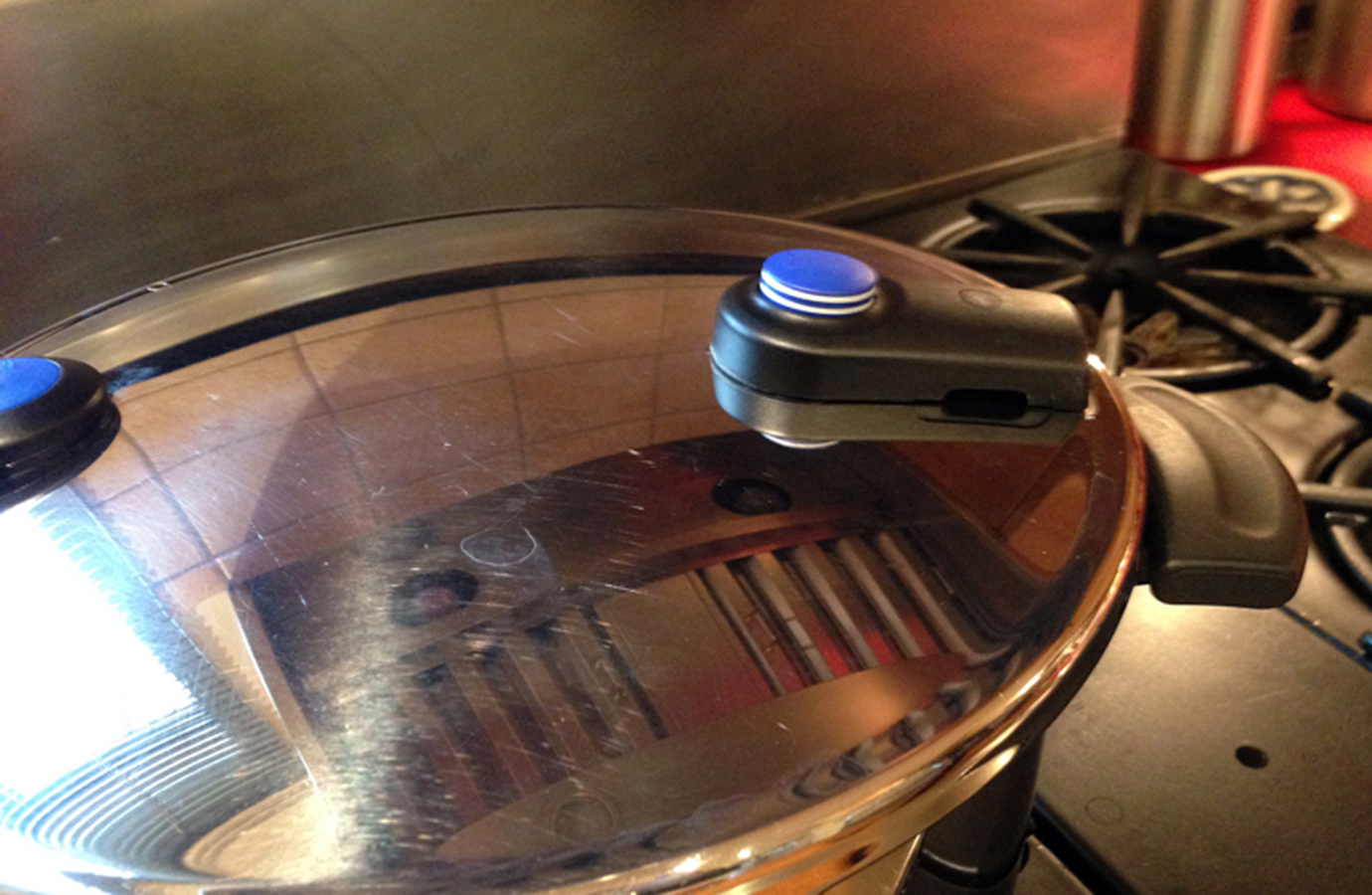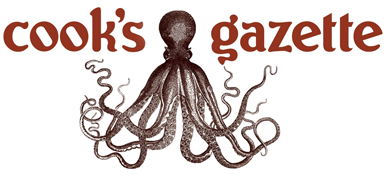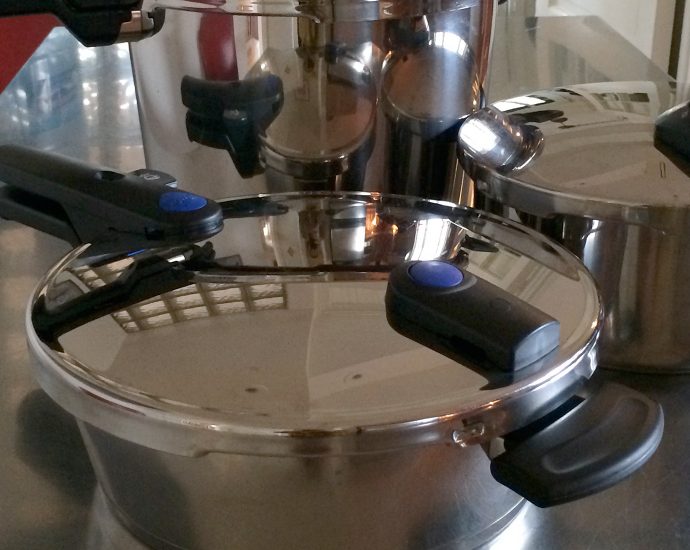There is a gadget on the market that permits a cook to scoff at time. It is a pressure cooker…
Irma S Rombauer, The Joy Of Cooking, 1946
In the 1970s there was a bar in New York City called the Pressure Cooker. It catered to cops and firemen. My husband (at the time) was an Emergency Room doctor and they hung out there too. It opened at 6 am and closed at 4 am. Whatever shift you got off, you could have some drinks, let off some steam, and dance with the sexy girls who also hung out there. Supposedly a lot of the women were suburban housewives from Jersey and Queens, out for a little adventure. They’d dash home, take off the makeup and the hot outfits and get dinner into the pressure cooker. By the time the kids and husband got there, dinner was ready, tasting like they’d been working on it all day. As the ad says “4 hours of flavor in 20 minutes.”
That’s all I used to know about pressure cookers. You mention them to anyone (unless they’re from North Africa, India, or the Middle East, where they never went out of fashion) and the standard response is, “I think my grandmother had one of those.” followed by “Aren’t they dangerous?” Then, in 2011, I started to explore the book that had taken the culinary profession by storm, Modernist Cuisine by Nathan Myhrvold. I thought it was going to focus only on new techniques and ingredients, like cooking sous vide or spherification. I was surprised to learn that Myhrvold and his team at the Cooking Lab were interested in pressure cookers too.
Pressure cooking isn’t how Escoffier made stock early in the last century, but we’re sure it is how he would do it now.
Nathan Myhrvold, Modernist Cuisine, 2011
Revered in the 1946 addition of The Joy of Cooking, pressure cookers had fallen out of fashion by the late fifties and didn’t really make a comeback in the United States until the eighties. Lorna Sass wrote what I still think is the best book on the topic, Cooking Under Pressure, first published in 1989. The pressure cooker seemed to again fade into obscurity until Modernist Cuisine was published in 2011.
According to Myhrvold ,“Fast, even, energy efficient cooking is all very nice, but it’s the higher quality of the food that really clinches the deal. Wonderful culinary aromas wafting through the kitchen while you cook may warm the heart, but those are some of the most crucial compounds of the flavor of the food and they are now forever lost to the air. The sealed environment of the pressure cooker locks in more of these volatile compounds. They condense onto the lid and drip back into the pot, so more of the nuances of the food are there when you put fork to mouth.” Modernist Cuisine, Nathan Myhrvold, 2012.
I was intrigued.
My first experiment was braised lamb with warm spices. So often with braises, by the time the meat is fork tender it is also dry, with its flavor surviving only in the sauce. I bought three pounds of lamb shoulder and cut it into 2-inch cubes. I browned the meat with onion and garlic, ginger, star anise, cinnamon and coriander, added chopped fresh tomatoes, a bay leaf and lamb broth to just cover the meat. I brought the pressure up to high (15psi) as indicated by the gauge on the lid. It took 12 minutes to cook the meat to moist, tender and flavorful perfection.
I was hooked.

Pressure cooker guage
Buying a pressure cooker: confessions of a pressure cooker addict
A pressure cooker is an expensive purchase but also an excellent investment. Maybe not “the single most important piece of cookware you’ll ever own,” as the manufacturer Fagor says in their instruction manual, but it’s right up there. I now cannot imagine my kitchen without at least one and I regularly use three. They are also an ideal choice when you are cooking for one. You can build the meal in a single pan. There is less to clean up and you can achieve maximum flavor in a short period of time…all so welcome when cooking for yourself.
You can find the best variety and purchase prices online. I bought the “Rolls Royce,” the Fissler brand, manufactured in Germany. Another chef friend calls my expensive purchase “totally unnecessary.” In any case, buy a pressure cooker with a well-constructed base; copper or aluminum sandwiched in between 18/10 stainless steel. Stovetop (non-electric) pressure cookers are more versatile. With electric cookers, you don’t have the option of quickly releasing pressure by running the pot under cold water. By the way, the modern brands all have pressure release safety features. No worries there.
The three sizes I think are most useful are 2.7, 4.8 and 10.6 quarts. If you are only going to get one pressure cooker, and usually cook for one to four people, I’d start out with the 2.7 quart Fissler Pressure Pan. If you will be using your pressure cooker to make stocks, and you should, you need the 10.6-quart pan. My 4.8-quart pan is in frequent use as well. I’m a pressure cooker addict…I have four and I’m fighting off the urge to buy another. A coping strategy has been to buy pressure cookers for friends.
Getting started
Think about pressure-cooking as a technique. With adjustments to timing, it will work with recipes and flavor profiles you are currently using, perhaps even improve them. For me it was a new technique and it took a while to find out which ingredients are greatly benefitted by using the pressure cooker and which are not. There is also a learning curve to getting the timing down. Lorna Sass gives the best general instructions and has the most accurate time charts. Her book, Cooking Under Pressure, is the perfect place to start exploring your new piece of equipment. Modernist Cuisine at Home has also taught me a lot. The focus in this book is on using the pressure cooker to achieve intense flavors and velvet textures rather than a focus on convenience and health benefits. Of particular interest are the instructions for stocks and purées.


I have been using my fabulous Fissler pressure cooker since reading this site, and have had amazing results. Recently, I made a beef and apricot stew with fresh tomatoes and cinnamon that cooked to perfection in 18 minutes! Love it – thank you for the push to start using pressure cooking – it is so fast and produces such flavorful results.
I have been introducing the pressure cooker to culinary students in class. Most of them as well as my colleagues never used a pressure cooker. They were naive to the benefits of using in a professional kitchen. Once shown, they were intrigued. Many began using them.